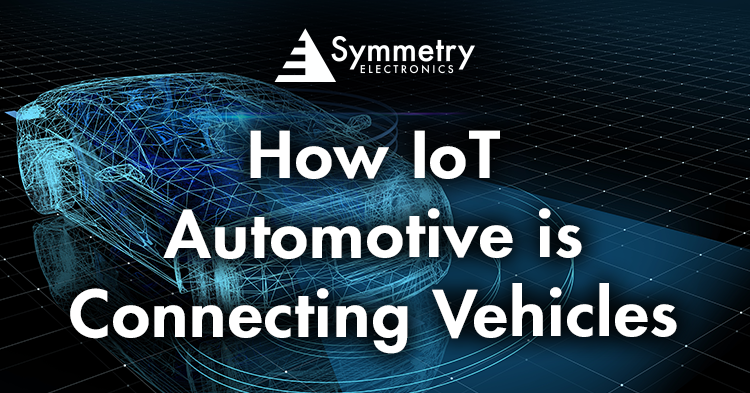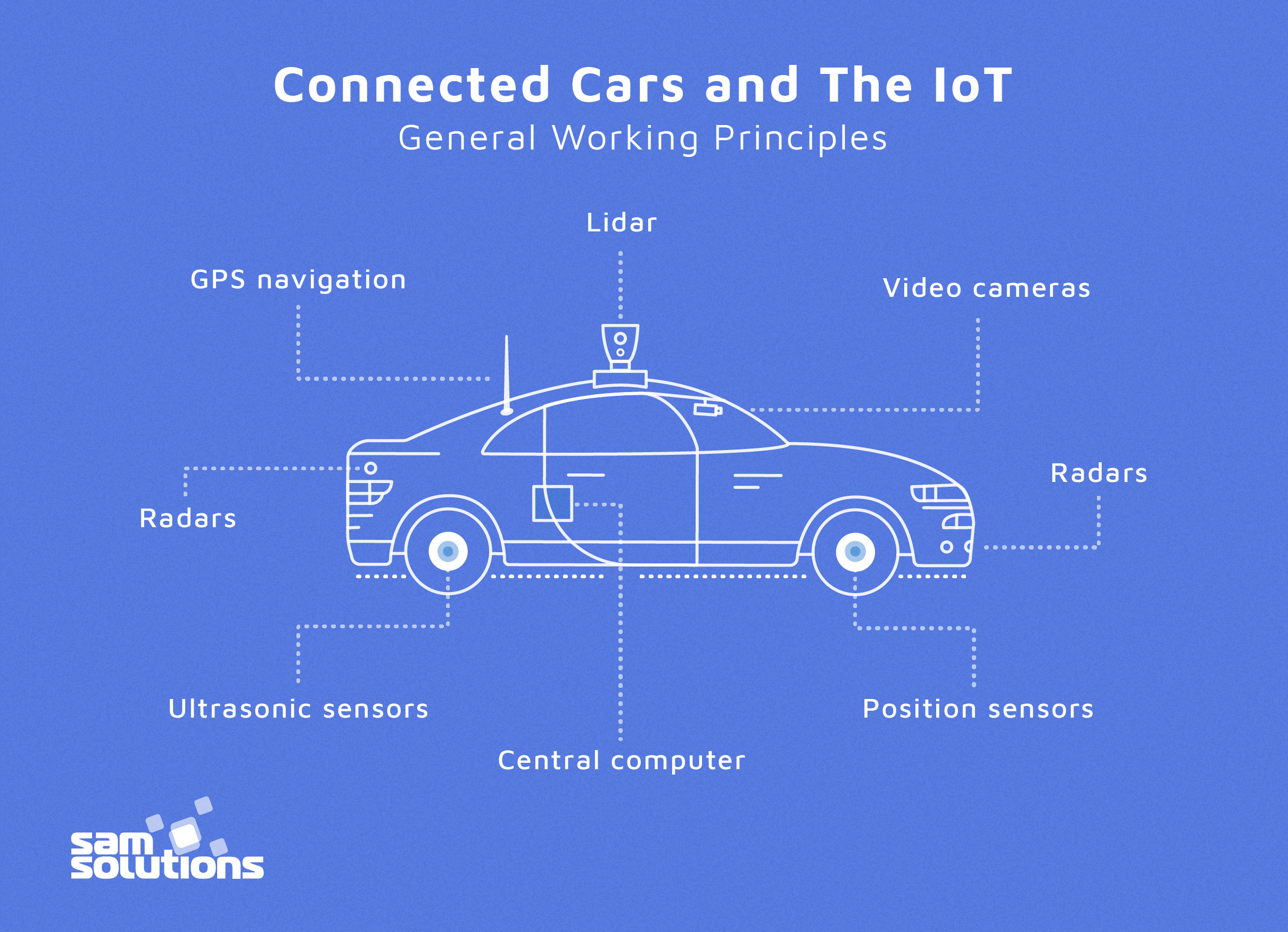- Home
- Symmetry Blog
- How IoT Automotive is Connecting Vehicles
How IoT Automotive is Connecting Vehicles
About Jari Haiston

It’s no secret that the semiconductor chip shortage has played a significant impact on the automotive industry. In fact, the chip shortage is still limiting auto production. Automakers produced 3.23 million less cars than originally predicted in 2022. In order to combat supply chain disruptions, automotive companies are seeking solutions like ordering surplus semiconductors to ensure inventory, but with no foreseeable end in sight, the answers may actually lie in the internet of things (IoT).
What Are Automotive IoT Solutions?
‘Automotive IoT’ refers to integrating IoT technology in automotive systems to create new applications and solutions that enable vehicles to provide an enhanced driving experience. Many of the world’s leading automakers are making strides in incorporating IoT into vehicle design. IoT integration is becoming increasingly commonplace in vehicle designs released today.
However, there is no ‘quick fix’ to the headwinds facing automakers but the transparency that IoT offers the automotive industry can unlock crucial real-time actionable insights that automakers so desperately need. For example, Ford only just found out that nine of their tier-1 suppliers had been getting their microchips from the same place when the supplier’s factory burned down. The digitization that IoT technology can bring to supply chains offers some means of control over the unpredictable factors contending with the automotive industry.
Automotive IoT Applications
Contrary to popular belief, the history of connected vehicles is extensive. The history of connected vehicles reaches all the way back to 1911 when electric starters were implemented into vehicle design. The first GPS navigation system in a car was debuted in 1995, and most of us are familiar with USB and Bluetooth connectivity in vehicles. Today, it is commonplace to see IoT technology as the backbone of the automotive systems in the connected vehicles (Figure 1) we drive every day. Most of the globe’s leading auto manufacturers are working to enable completely automated driving experiences through IoT.
IoT Automotive applications include:
- Video cameras
- Position, proximity, and ultrasonic sensors
- GPS navigation
- Lidar
- Central computers
- And more
Advantages and Disadvantages of IoT Automotive
With the ultimate goal of connected vehicles becoming a fully automated driving experience, where your car drives without you needing to intervene or make decisions, it begs the question of the benefits behind it. After all, some of us actually like to drive. Some of the benefits behind enhanced driving automation are:
- Increased accessibility for people with health challenges that limit them from driving their own vehicles. IoT-integrated vehicles help everyone get around.
- Reduced accidents and fatalities through onboard sensors, evaluation equipment, and other IoT technologies.
- Increased potential to help devastated areas through simplified delivery of goods. Volunteers and rescue fleet personnel need not drive into disaster areas
- Increased money savings for companies by saving on driver salary.
- Job loss. Driving jobs will be obsolete.
- Issues surrounding ethicality. Will self-driving cars make the right decision in instances of inevitable collision?
- Increased potential for IoT auto and connect system cyber attacks
- Legislative issues regarding responsible parties
Automotive IoT is Driving the Future
After identifying the disadvantages, it should be said that we are already experiencing many of the benefits of connected vehicles already. We play the music we want to hear when driving. The proximity sensors in our cars let us know when we should not merge lanes. The backup cameras on our cars have saved us from many collisions. IoT Automotive is already benefitting us, should we stop it from driving our future? IoT automotive may not be the quick answer to supply chain disruptions, but it is the long-term key to connecting vehicles.
If you’re interested in seeing how IoT can benefit your automotive application or use case, Symmetry Electronics is here to guide you. Our knowledgeable team of Applications Engineers are experts in IoT, IIoT, and wireless technology and can assist you in finding automotive IoT solutions. Consultation is free and available throughout your design cycle. Contact Symmetry Electronics today!

